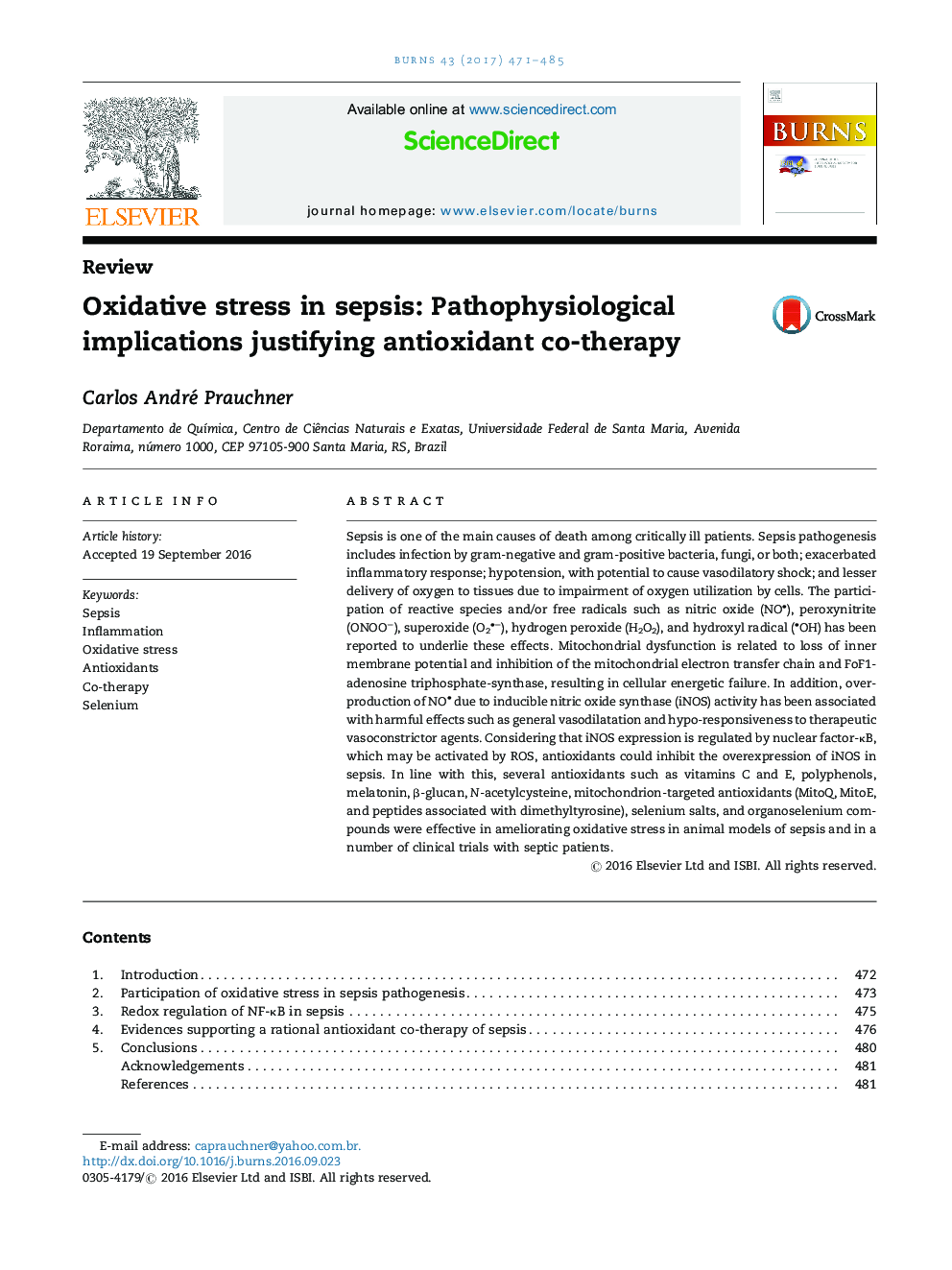| کد مقاله | کد نشریه | سال انتشار | مقاله انگلیسی | نسخه تمام متن |
|---|---|---|---|---|
| 5636273 | 1406666 | 2017 | 15 صفحه PDF | دانلود رایگان |
- Sepsis is a multifactorial syndrome.
- Oxidative stress participates in sepsis pathogenesis and mitochondrial dysfunction.
- Low ATP levels accelerate apoptosis/necrosis and contribute to multiple organ failure.
- Antioxidants represent a therapeutic strategy for septic patients.
- Mitochondrion-targeted antioxidants and selenium alleviate oxidative stress in sepsis.
Sepsis is one of the main causes of death among critically ill patients. Sepsis pathogenesis includes infection by gram-negative and gram-positive bacteria, fungi, or both; exacerbated inflammatory response; hypotension, with potential to cause vasodilatory shock; and lesser delivery of oxygen to tissues due to impairment of oxygen utilization by cells. The participation of reactive species and/or free radicals such as nitric oxide (NO), peroxynitrite (ONOOâ), superoxide (O2â), hydrogen peroxide (H2O2), and hydroxyl radical (OH) has been reported to underlie these effects. Mitochondrial dysfunction is related to loss of inner membrane potential and inhibition of the mitochondrial electron transfer chain and FoF1-adenosine triphosphate-synthase, resulting in cellular energetic failure. In addition, overproduction of NO due to inducible nitric oxide synthase (iNOS) activity has been associated with harmful effects such as general vasodilatation and hypo-responsiveness to therapeutic vasoconstrictor agents. Considering that iNOS expression is regulated by nuclear factor-κB, which may be activated by ROS, antioxidants could inhibit the overexpression of iNOS in sepsis. In line with this, several antioxidants such as vitamins C and E, polyphenols, melatonin, β-glucan, N-acetylcysteine, mitochondrion-targeted antioxidants (MitoQ, MitoE, and peptides associated with dimethyltyrosine), selenium salts, and organoselenium compounds were effective in ameliorating oxidative stress in animal models of sepsis and in a number of clinical trials with septic patients.
Journal: Burns - Volume 43, Issue 3, May 2017, Pages 471-485
